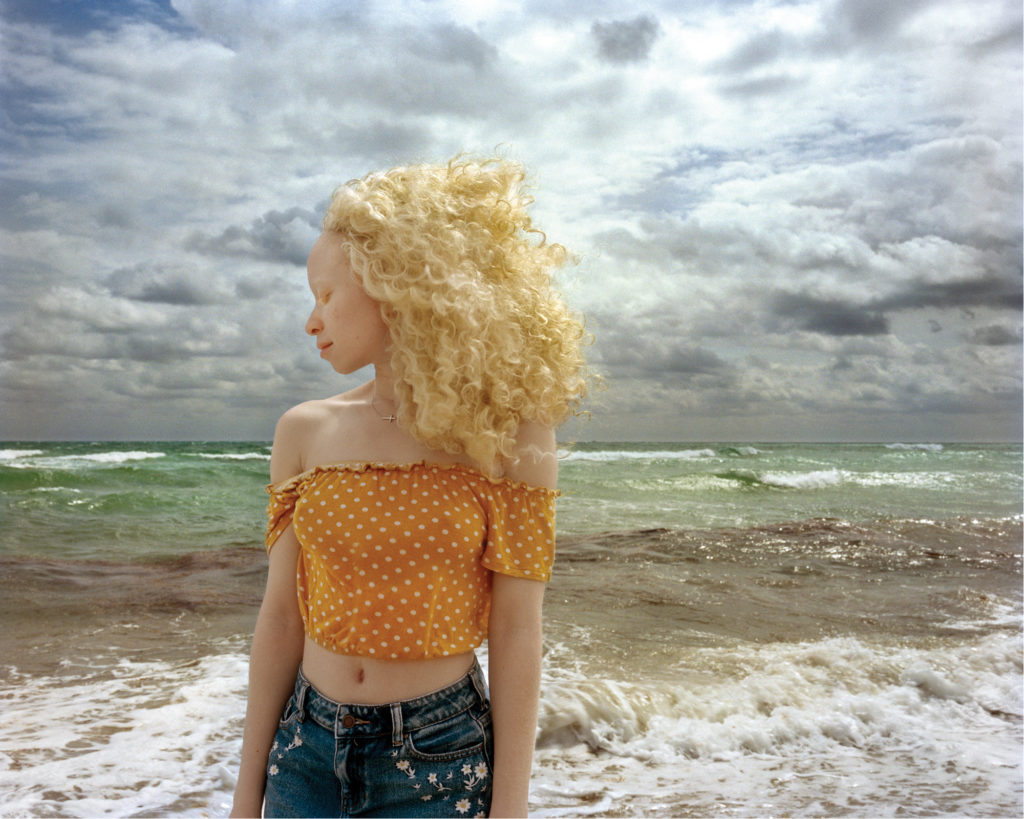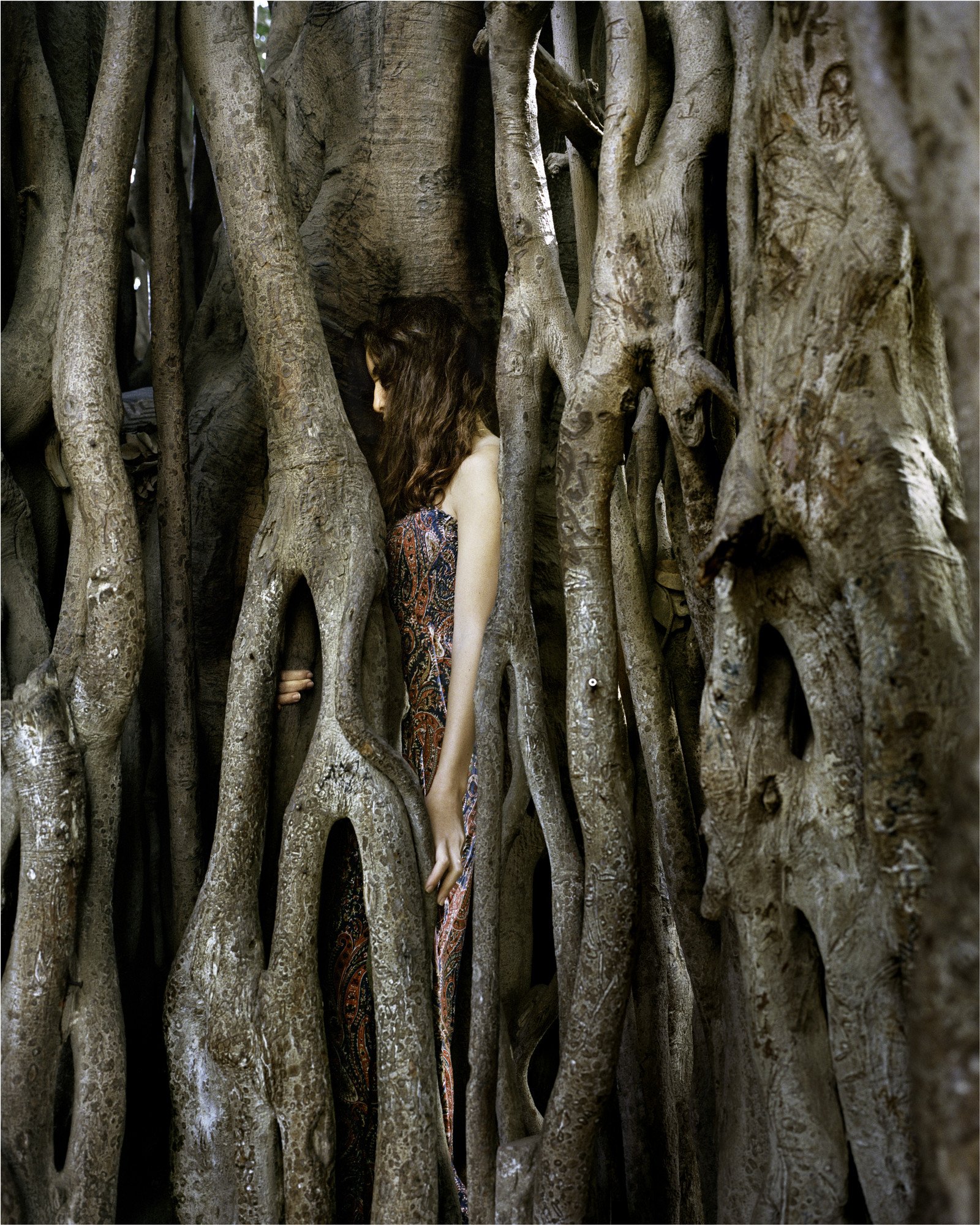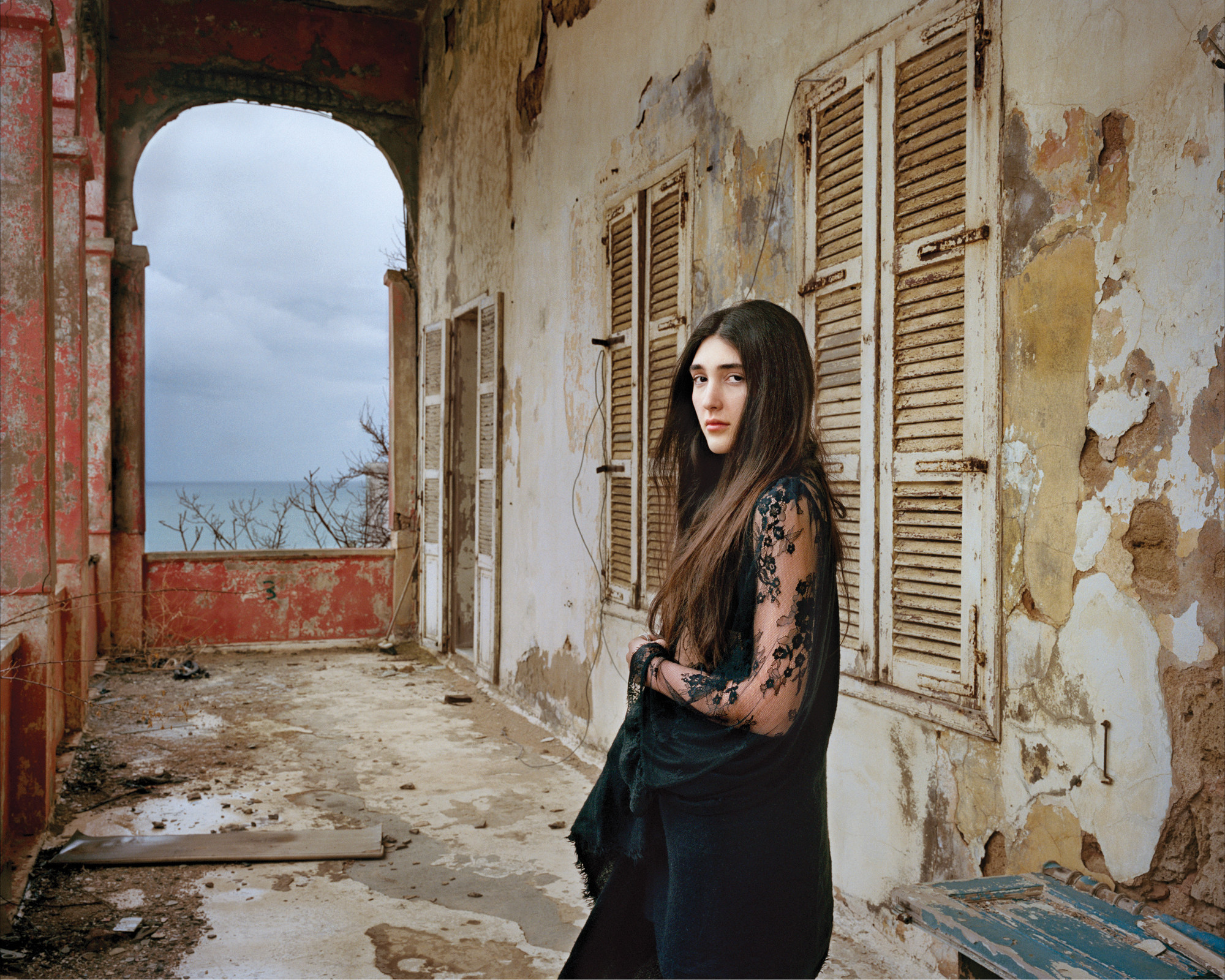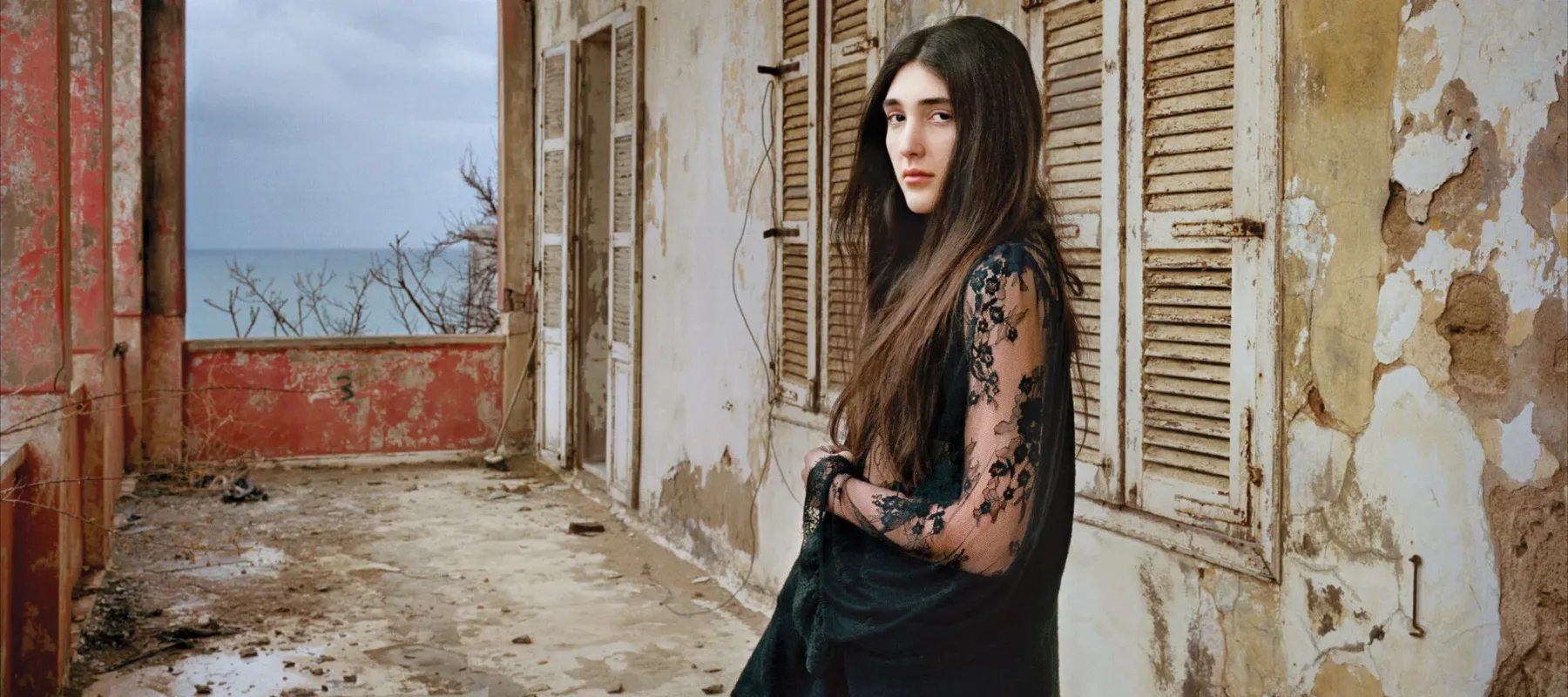In 2019, NMWA presented the exhibition Live Dangerously, featuring photographs that portray and celebrate women in the natural world. Three works by Rania Matar (b. 1964, Lebanon) were on loan to the exhibition. These large-scale photographs, from her ongoing series “SHE” (2017–present), depict women in their early 20s in lush, colorful, textured landscapes in the United States and the Middle East. Through generous gifts from museum benefactors, all three photographs—Rayven, Miami Beach, Florida (2019), Yara, Cairo, Egypt (2019), and Lea #1 Beirut, Lebanon (2019)—are now part of the museum’s collection.

SHE
When Matar embarked on “SHE,” her daughters had left home to attend university and enter the workforce, leading the artist to pose questions about how women face societal expectations. Unlike her earlier series, which showed teenage girls in their rooms, the images in “SHE” reveal a more fully realized physicality. As her subjects mature, the women form complex relationships with environments outside the familiarity of their childhood homes.
Matar’s figures are agents of creation: as sentient, self-fashioning individuals, they construct their own identities in collaboration with the artist. In Yara, the young woman stands partially concealed in the crevasses of a banyan tree. Matar had noticed that Yara’s long limbs fit in total harmony with the trunk’s vertical shoots. Originally dressed in long sleeves, Yara changed into a sleeveless garment from her own wardrobe to emphasize the relationship between her body and the curvilinear branches. Matar recalls, “It was as [though] she became one with the tree on her own.”

Owing to her initial training as an architect, Matar is acutely perceptive of the character of a place, teasing out its unique qualities in her sensitive portraits. Lea #1 was photographed at La Maison Rose, a dilapidated 19th-century mansion in Beirut, abandoned since the Lebanese Civil War (1975–90). Lea stands in an exterior passageway overlooking the Mediterranean Sea. Signs of neglect and decay throughout the composition contribute to the photograph’s melancholic beauty. For Matar, this image is a symbol of a new generation—young people who did not personally experience the war but have grown up with its collective memory.

Matar at NMWA
Matar’s work has been featured at the museum in Live Dangerously as well as the 2016 exhibition She Who Tells A Story: Women Photographers from Iran and the Arab World. Matar has also participated in virtual and in-person public programming with enthusiastic response from the museum’s audiences. The photographs from “SHE” are the first works by the artist to enter the collection, augmenting the museum’s holdings of contemporary photography and work by artists from the Middle East and its diasporas. Of these recent acquisitions, Matar states, “I am immensely honored that the three photographs became part of the permanent collection of a museum that celebrates women. This work is by a woman and about women, about their majestic beauty, their strength, their power, their vulnerability, their voice, all at once, and I cannot think of a better home for them.”
Text is adapted from the author’s essay “Wanderesses” for the book Rania Matar: SHE (Radius Books, 2021).
